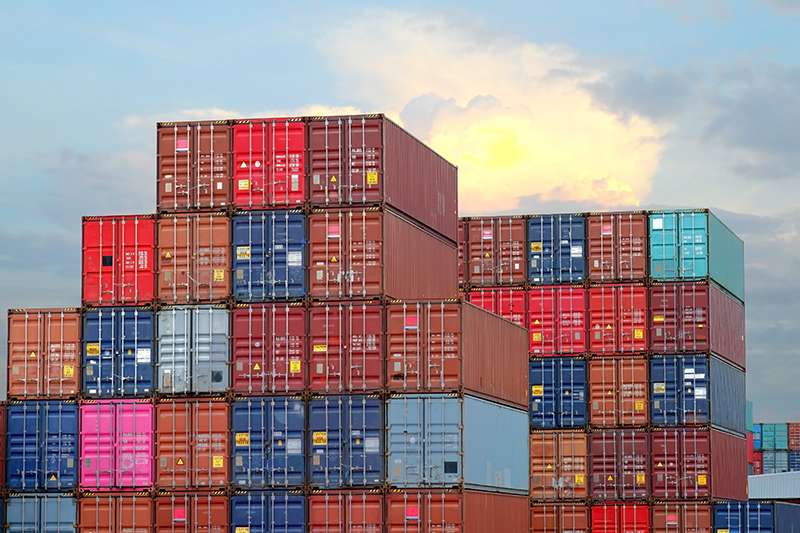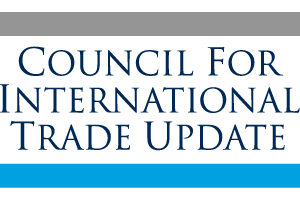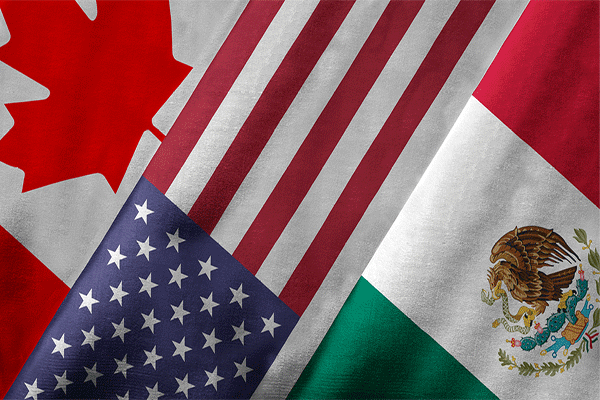This week, the California Chamber of Commerce joined more than 225 trade associations and other supply chain stakeholders in urging the federal administration to work with them to address concerns about anticipated port congestion and supply chain disruption.
The associations — representing U.S. importers, exporters and transportation providers — noted in their June 17 letter that the port congestion and supply chain disruption will soon have an impact on U.S. competitiveness.
The coalition sent their letter to U.S. Transportation Secretary Sean Duffy, U.S. Commerce Secretary Howard Lutnick and U.S. Federal Maritime Commission Chairman Louis Sola.
The CalChamber concurs there is concern that the 2025 tariff implementation changes may recreate the supply chain challenges shippers faced during the pandemic: severe port congestion, inaccessible vessel capacity and containers, higher freight rates, and shipment delays.
Reviving Task Force
The letter goes on to urge the administration to reconstitute the 2021–2022 White House Supply Chain Disruption Task Force to address these issues proactively and as soon as possible.
In 2021, Federal Maritime Commissioner Chairman Daniel B. Maffei directed Commissioner Carl W. Bentzel to lead the Maritime Transportation Data Initiative. Commissioner Bentzel held meetings with maritime and intermodal stakeholders beginning in December 2021, culminating in a Data Summit in June 2022.
Commissioner Bentzel focused the data initiative on three key objectives:
• Cataloging the status quo in maritime data elements, metrics, transmission and access;
• Identifying key gaps in data definitions/classification; and
• Developing recommendations for common data standards and access policies/protocols.
Initial findings from five months of weekly virtual meetings with maritime and intermodal stakeholders were presented on June 1, 2022 at a virtual summit of the Federal Maritime Commission.
Reaction to Added Tariffs
When the United States imposed additional tariffs — in particular with China — many companies either paused or canceled their orders for imports to the United States. The immediate impact was a sudden decline in vessel traffic to the United States, which caused ocean liner carriers to reduce capacity by either pulling vessels out of the market or engaging in blank sailings. The added tariffs also set off layoffs and turmoil throughout multimodal logistics industry.
The current rush to move cargo has led to a shortage of empty shipping containers at points of origin and limited vessel capacity as carriers rework their vessel deployment to accommodate the spike in cargo. Further, congestion is starting at foreign ports and there have been significant increases in ocean freight rates and charges, like what many companies experienced during the pandemic.
Being Prepared
In anticipation of a surge of cargo from Asia, especially to West Coast ports, the U.S. land-side transportation infrastructure and service providers also must be prepared for increased activity.
The coalition is asking the administration to engage ports, terminal operators, truckers, railroads, warehouses and labor to ensure all are ready to support the seamless flow of cargo through the ports as it begins to arrive.
The executive director of the Port of Los Angeles told an agriculture transportation audience this week he doesn’t foresee a huge surge of cargo in the coming weeks.
Port of Long Beach officials said they expect a boost in late June, telling the Long Beach Business Journal that the temporary pause on the higher China tariffs “will likely trigger a cargo surge.”
But as the coalition asserted, no one can afford a repeat of the congestion and resulting cargo velocity issues that plagued U.S. supply chains during the pandemic. The coalition encouraged the administration to work with ocean carriers, ports, terminal operators, rail carriers, and trucking companies to ensure they are able to meet the demands of U.S. importers and exporters — especially as congestion issues start to arise in overseas markets and freight rates increase.
Mitigating the risk of severe supply chain disruptions will minimize adverse impacts on the global competitiveness of U.S. exporters and importers.
Staff Contact: Susanne T. Stirling



